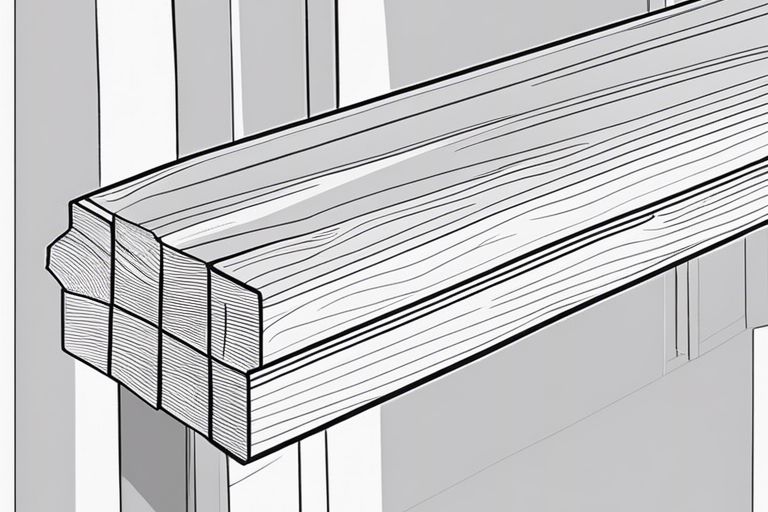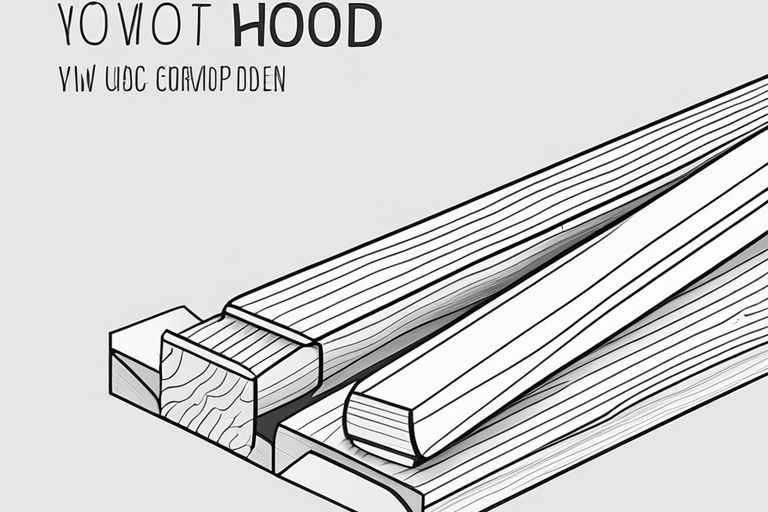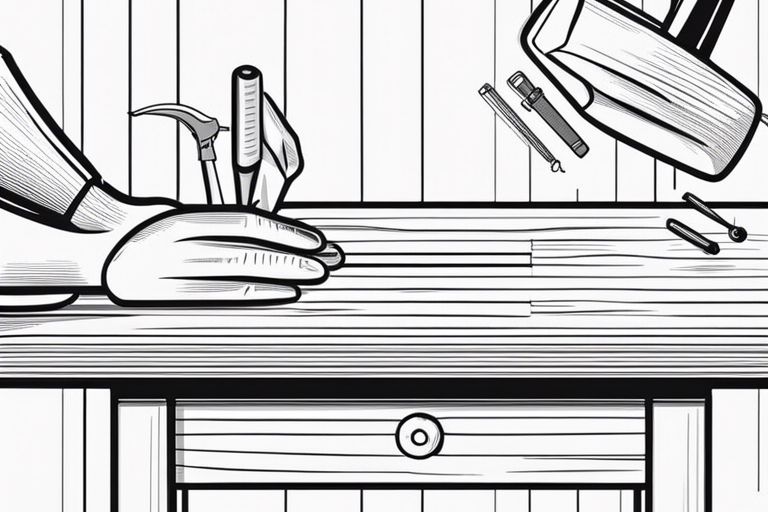Budget-Friendly Methods – How To Join Wood Without Expensive Tools

There’s no need to break the bank when it comes to joining wood pieces together. With budget-friendly methods, you can achieve sturdy and professional-looking results without the use of expensive tools. In this guide, we will explore cost-effective techniques that are both easy to implement and efficient for any woodworking project.
Key Takeaways:
- Pocket Hole Jig: Investing in a pocket hole jig is a budget-friendly way to join wood without expensive tools. It allows you to create strong and reliable connections for your woodworking projects.
- Wood Glue and Clamps: Utilizing wood glue along with clamps can be a cost-effective method for joining wood. By applying a generous amount of glue and securely clamping the pieces together, you can create sturdy joints without the need for specialized tools.
- Biscuit Joiner Alternative: While a biscuit joiner is a popular tool for joining wood, you can achieve similar results using a circular saw or a router with a straight bit. This DIY approach can help you save money while still achieving professional-looking joints.

Types of Budget-Friendly Wood Joining Methods
Before plunging into the various budget-friendly wood joining methods, it’s important to understand the options available. There are several types of budget-friendly wood joining methods that can be used to create strong and durable connections without the need for expensive tools. These methods include mechanical fasteners, adhesives, and traditional woodworking techniques. Any of these methods can be utilized depending on the project at hand.
| Mechanical Fasteners | Adhesives |
| Traditional Woodworking Techniques |
Mechanical Fasteners
Assuming you have access to basic tools like a drill and screws, mechanical fasteners are a budget-friendly way to join wood pieces together. This method can be quick and effective for smaller woodworking projects.
Adhesives
Types of adhesives such as wood glue or epoxy can be used as a budget-friendly wood joining method. These adhesives can create a strong bond between wood pieces, making them suitable for a variety of projects. Important to note, some adhesives may require clamping while the bond sets.
Mechanical fasteners and adhesives are popular budget-friendly wood joining methods that can be used for a wide range of projects. While mechanical fasteners are quick and easy to use, adhesives provide a strong and lasting bond between wood pieces.
Traditional Woodworking Techniques
Some traditional woodworking techniques such as dovetail joints or mortise and tenon joints can be achieved with basic hand tools like a saw and chisel. These techniques require skill and precision, but they can create beautiful and strong connections in wood projects.
Wood joinery techniques such as dovetail and mortise and tenon joints offer a strong and durable connection between wood pieces. While these techniques may require more skill and practice, they can result in professional-looking craftsmanship in woodworking projects.
Factors to Consider When Choosing a Method
Some factors to consider when choosing a method to join wood without expensive tools include the type of wood, the project requirements, and your personal skill level. Recognizing these factors will help you select the most suitable technique for your woodworking project. For more detailed information on how to edge joint/square up wood without a table saw or expensive tools, check out this Reddit post.
Wood Type and Grain Direction
Little considerations should be given to the type of wood being used and the grain direction when deciding on a method to join wood. Choosing the appropriate technique to account for these factors can help ensure a strong and durable bond between the pieces.
Project Requirements and Design
Assuming the project requirements and design will play a significant role in choosing a suitable wood joining method. Factors such as the size, shape, and purpose of the project will determine which technique is the most appropriate. Recognizing these aspects early on will lead to better results in the final product.
Personal Skill Level and Experience
Personal skill level and experience in woodworking should not be underestimated when selecting a wood joining method. Beginners may opt for simpler techniques that require less precision, while advanced woodworkers may choose more intricate methods for a seamless finish.
Step-by-Step Guides to Popular Methods
Using Nails and Screws Effectively
Methods: When joining wood using nails and screws, it is crucial to pre-drill holes to prevent splitting. Choose the appropriate size and type of fastener for the project to ensure a strong bond.
Mastering the Art of Wood Glue
Assuming: Wood glue is a cost-effective and efficient way to join wood pieces together. Apply an even coat of glue on the surfaces to be joined, clamp the pieces together, and let them dry for at least 24 hours for a secure bond.
For instance, using a good quality wood glue such as Titebond can create a bond stronger than the wood itself. It is crucial to follow the manufacturer’s instructions for the best results.
Creating Strong Mortise and Tenon Joints
Screws: To create mortise and tenon joints, carefully measure and cut the pieces to fit snugly together. Use a chisel to create the mortise and tenon, then secure with screws for added strength.
Wood: Mortise and tenon joints are famous for their strength and durability, making them ideal for furniture and woodworking projects that require sturdy connections.
Tips and Tricks for Success
Keep these budget-friendly methods in mind when joining wood without expensive tools:
- Use wood glue for a strong bond.
- Clamp pieces tightly together for even pressure.
- Consider dowels or biscuits for added reinforcement.
This will help ensure your wood joints are sturdy and long-lasting.
Preparing Your Wood for Joining
One important step in joining wood is to ensure that your pieces are properly dimensioned and cut to the correct angles for the joint you are using. This will help create a tight fit and a strong bond between the pieces.
Avoiding Common Mistakes and Pitfalls
Even with the best preparation, mistakes can still happen. Avoid common pitfalls like using the wrong type of glue, not clamping pieces together properly, or rushing the process. Taking your time and double-checking your work can help prevent errors.
The key to successful wood joining lies in attention to detail and patience. Rushing through the process can lead to weakened joints that may fail over time. By being mindful of the steps and techniques involved, you can avoid common pitfalls and achieve a strong, durable bond between your wood pieces.
Troubleshooting and Repairing Failed Joints
Avoiding
Failed joints can be a frustrating setback, but they can often be salvaged with the right approach. One common method for repairing failed joints is to remove the old glue, reapply fresh glue, and clamp the pieces together again. This can help reinforce the bond and fix any issues with the joint.
Failed joints can be a learning experience and an opportunity to improve your technique. By identifying the cause of the failure and taking steps to correct it, you can salvage your project and create a strong, lasting joint.
Weighing the Pros and Cons of Each Method
After exploring various budget-friendly methods to join wood without expensive tools, it’s vital to weigh the pros and cons of each technique. Below, you’ll find a detailed breakdown to help you make an informed decision:
| Method | Pros and Cons |
| 6 Simple Ways to Joint a Board without a Jointer | Offers versatility but may require precision and skill. |
Cost-Benefit Analysis of Mechanical Fasteners
Method: When considering the cost-benefit analysis of using mechanical fasteners to join wood, it’s important to factor in the initial investment in tools and materials against the long-term durability and ease of use provided by these methods.
Evaluating the Strength and Durability of Adhesives
There’s a range of adhesive options available for joining wood, each with its own strengths and weaknesses. It’s crucial to consider factors such as bond strength, drying time, and weather resistance when evaluating the suitability of adhesives for your woodworking projects.
Pros:
Adhesives offer a strong bond and can be less visible compared to mechanical fasteners, providing a seamless finish to your woodworking projects.
Comparing Traditional Techniques to Modern Methods
One of the key considerations when deciding how to join wood is whether to use traditional techniques or modern methods. Here is a breakdown of the pros and cons of each:
| Traditional Techniques | Modern Methods |
| Can provide a rustic and authentic look but may require more manual effort. | Offer precision and ease of use but can lack the character of traditional joinery. |
Another important factor to consider is the impact of environmental factors on the longevity of the join. While traditional methods may have stood the test of time, modern techniques can offer increased durability and stability in varying conditions.
Conclusion
Taking this into account, it is clear that there are many budget-friendly methods available for joining wood without the need for expensive tools. By utilizing techniques such as glue, dowels, pocket holes, and even simple clamps and screws, you can successfully create strong and durable woodworking projects without breaking the bank. Whether you are a beginner or a seasoned woodworker, these cost-effective methods are great options for joining wood effectively.
FAQ
Q: What is the best budget-friendly method to join wood without expensive tools?
A: One of the best budget-friendly methods to join wood without expensive tools is using wood glue and clamps. This method is effective, easy to use, and requires minimal investment.
Q: Can I join wood without expensive tools using screws and a screwdriver?
A: Yes, you can join wood without expensive tools using screws and a screwdriver. Simply align the pieces of wood, drill pilot holes, and then drive the screws in place with a screwdriver. This method is affordable and provides a strong bond.
Q: Is it possible to join wood without expensive tools using dowels?
A: Yes, joining wood using dowels is another budget-friendly method that doesn’t require expensive tools. You can insert dowels into corresponding holes drilled in the pieces of wood to create a strong joint.
Q: How can I join wood without expensive tools using a pocket hole jig?
A: A pocket hole jig is a cost-effective tool that can be used to join wood without the need for expensive tools. By drilling pocket holes at an angle, you can create strong joints by driving screws into the pocket holes.
Q: Are there any other budget-friendly methods to join wood without expensive tools?
A: Yes, another budget-friendly method to join wood without expensive tools is using wood biscuits. By cutting slots in the wood pieces and inserting wood biscuits coated with glue, you can create a strong and durable joint without the need for expensive tools.
